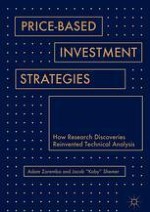2018 | OriginalPaper | Buchkapitel
6. Januaries, Mays, and Lunar Cycles: Stock Selection with Seasonal Anomalies
verfasst von : Adam Zaremba, Jacob “Koby” Shemer
Erschienen in: Price-Based Investment Strategies
Aktivieren Sie unsere intelligente Suche, um passende Fachinhalte oder Patente zu finden.
Wählen Sie Textabschnitte aus um mit Künstlicher Intelligenz passenden Patente zu finden. powered by
Markieren Sie Textabschnitte, um KI-gestützt weitere passende Inhalte zu finden. powered by
